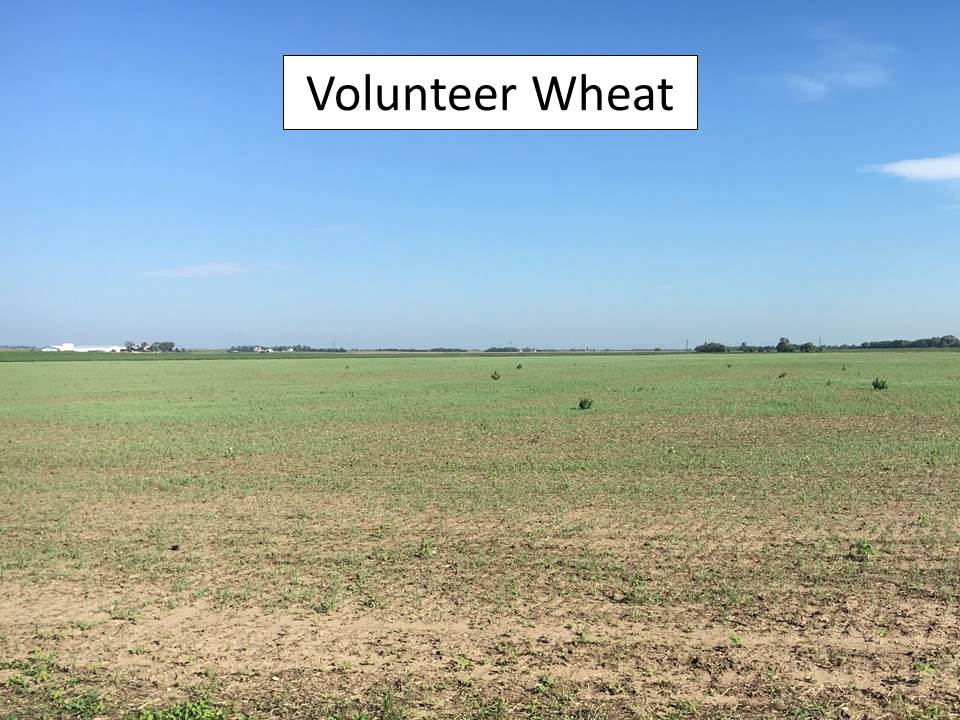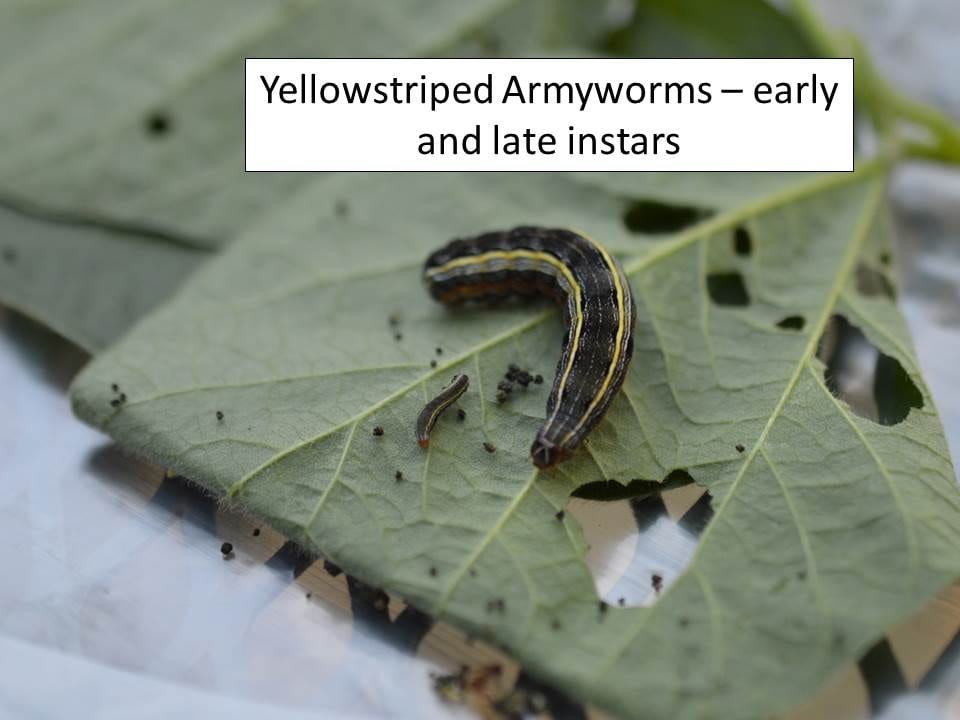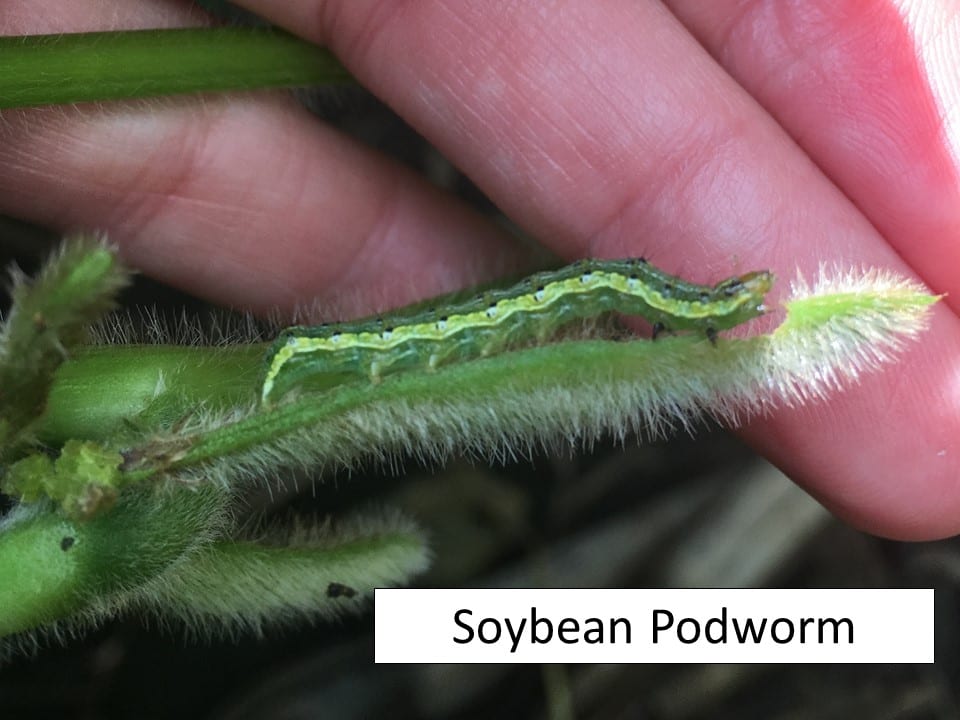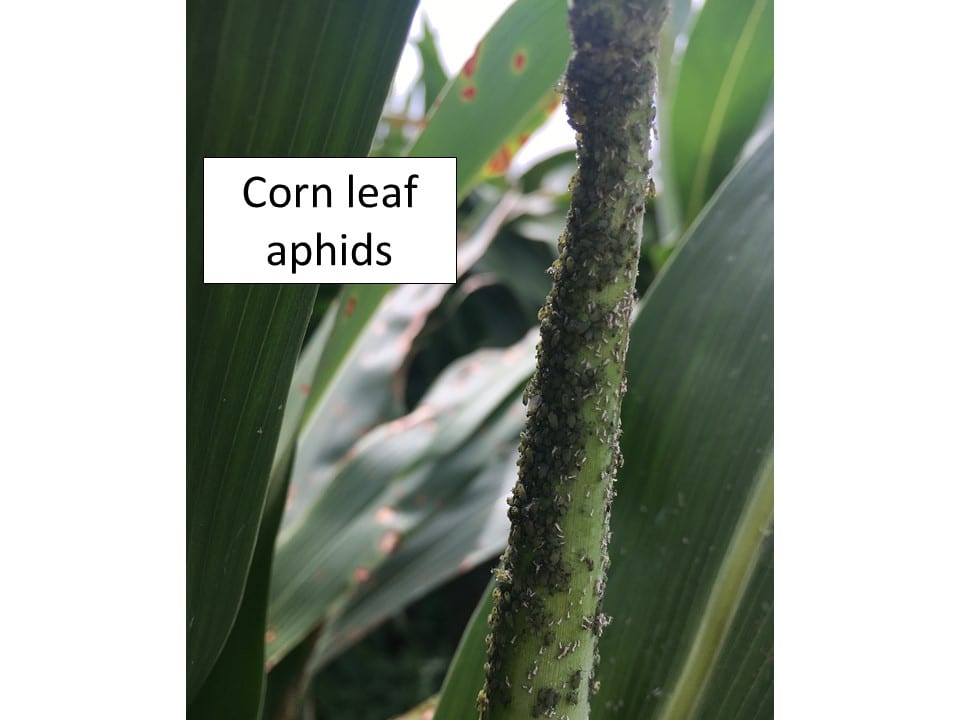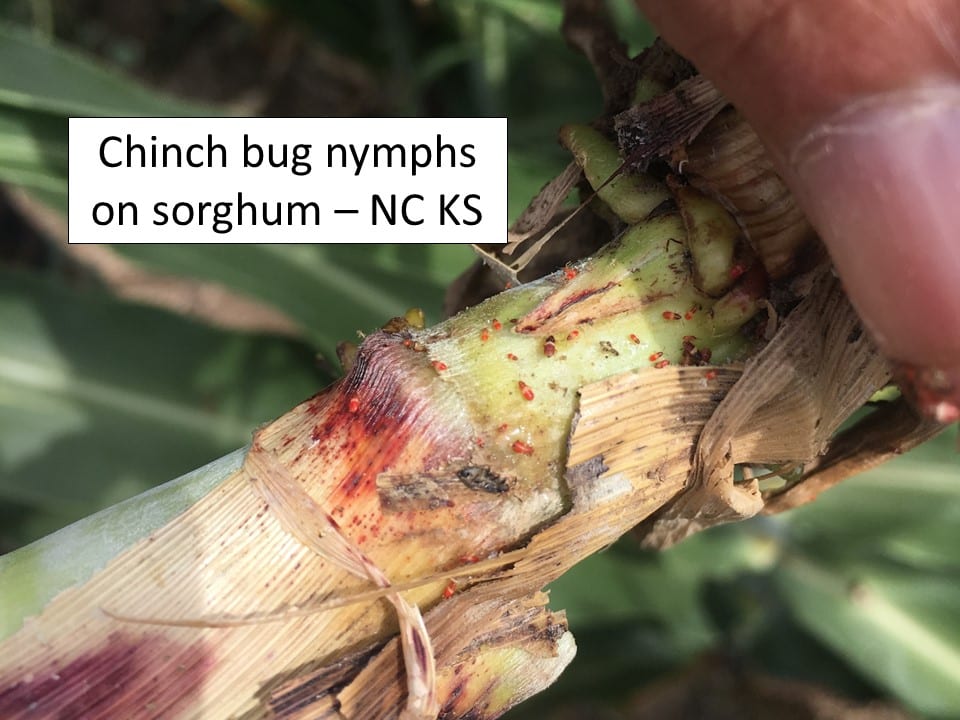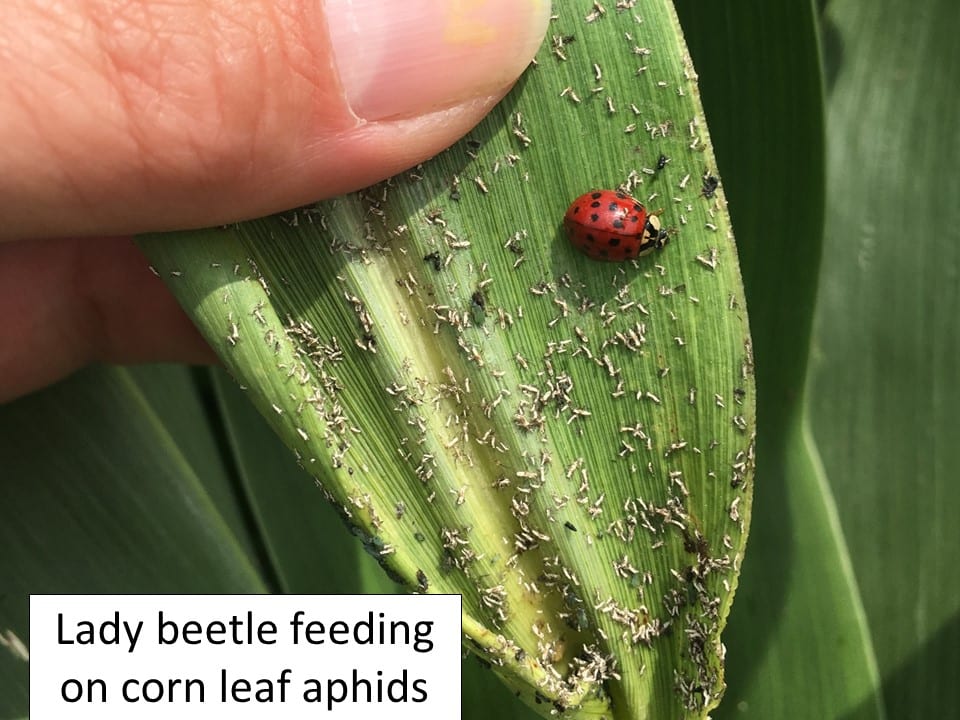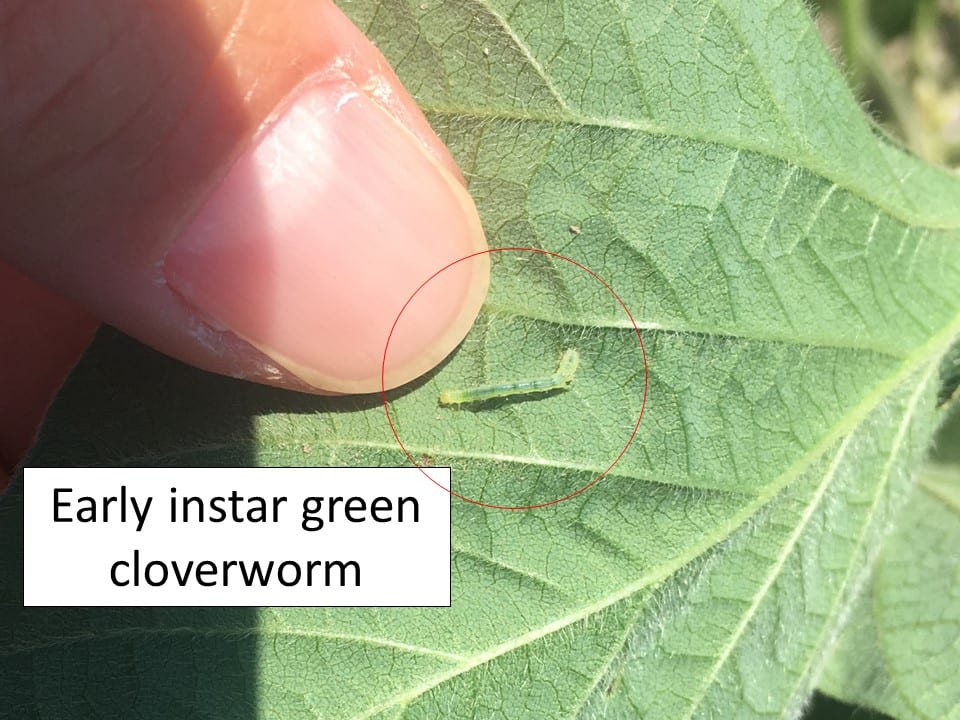–By Dr. Jeff Whitworth and Dr. Holly Schwarting
Sorghum continues to get the attention of many pests and beneficials. Chinch bug populations are not diminishing even though they are not as noticeable because most are feeding around the base of the plants and behind leaf sheaths on the stalks. Much late planted, or at least slower developing, sorghum is still vulnerable to these chinch bugs. Bugs may also move up to the heads as they emerge from the whorl to feed on the forming kernels that provide a succulent source of nutrients.
‘Sorghum headworms’, mostly corn earworms but also a few fall armyworms, are infesting all sorghum fields (not yet in the soft dough stage) that we monitored throughout north central Kansas. Most fields have close to, or are exceeding, 100% infestation levels (1 or more larvae/head). These larvae are present in all different sizes, or developmental stages, from 1st to 4th instars. Thus, they will be feeding on these kernels for at least another 7 – 10 days.

Remember, between flowering and soft dough, these larvae will cause 5% yield loss/ worm/ head. Very few beneficials are available to help control headworm populations. However, there are huge populations of beneficials currently present to help control any aphid pests that are, or might be present in the near future.
Corn leaf aphid populations were common on earlier planted sorghum, and still are on later planted sorghum that is just reaching the whorl stage. These corn leaf aphids have really helped fuel the beneficial populations. Fields that have headed out are swarming with lady beetle adults and larvae, syrphid or hover flies, green lacewings, and parasitic wasps.



Sugarcane aphid (SCA) populations are becoming scattered around north central KS, slowly so far, and are really attracting the attention of all these beneficials, which will hopefully help control colony growth.
For management considerations and recommendations for these, and other sorghum pests, please refer to the 2018 Sorghum Insect Management Guide: https://www.bookstore.ksre.ksu.edu/pubs/mf742.pdf
